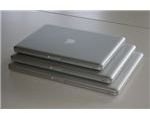
You’ll hear a soft click when the connection is made, and at that point, the drive will be ready to show up as a volume on your USB- or Thunderbolt-connected Mac. Using Drive Dock is as simple as plugging your internal drive into one of the bays, SATA plugs facing downwards in the lower left corner. You’ll also get a USB 3.0 cable and a power cable in the box a power switch on the back controls the entire unit, while individual power buttons on the top can power each drive on or off as preferred. On the functional side, OWC bundles Drive Dock with a Thunderbolt 2 cable, which is fairly uncommon for accessories of this type, as well as dual Thunderbolt 2 ports so Drive Dock can sit in the middle of a Thunderbolt chain rather than at its end. The thick aluminum and equally sturdy black plastic chassis are arguably the least important of these features, though they do a very nice job of matching everything from iMacs and Mac minis to MacBook Airs and MacBook Pros they also enable Drive Dock to remain stable on your desk when you’re connecting or disconnecting drives from its bays. There’s no question that Drive Dock carries a substantial design and electronics premium over functionally similar alternatives from companies such as Sabrent - this, like OWC’s Mercury Pro optical disc burners ( reviewed here), is a fancier, Mac-matching option with features that will be of disproportionate interest to professional users. Fastest speeds will be seen with 2012+ SATA III drives, esp.


The top has two SATA-compatible drive bays, each capable of holding 2.5″ laptop drives or 3.5″ desktop drives, while the bottom holds a power supply capable of safely powering both drives as plug-and-play volumes… Sporting a substantially metal chassis with Thunderbolt 2 and USB 3.0 ports, OWC’s new Drive Dock ($245) is a premium solution for people who want high-speed, on-demand access to internal hard drives.


But what if you want to swap multiple internal hard drives in and out on an as-needed basis? Most people would seek out an external hard drive enclosure, which is ideal if you want to commit to repurposing one internal drive for an extended period of time. New drives are cheaper and higher-capacity than increasingly popular solid state drives, and old drives pulled from computers are hard to throw away, even if they’re past their prime. Mechanical hard drives will continue to be available - though decreasingly important - into the foreseeable future.


 0 kommentar(er)
0 kommentar(er)
